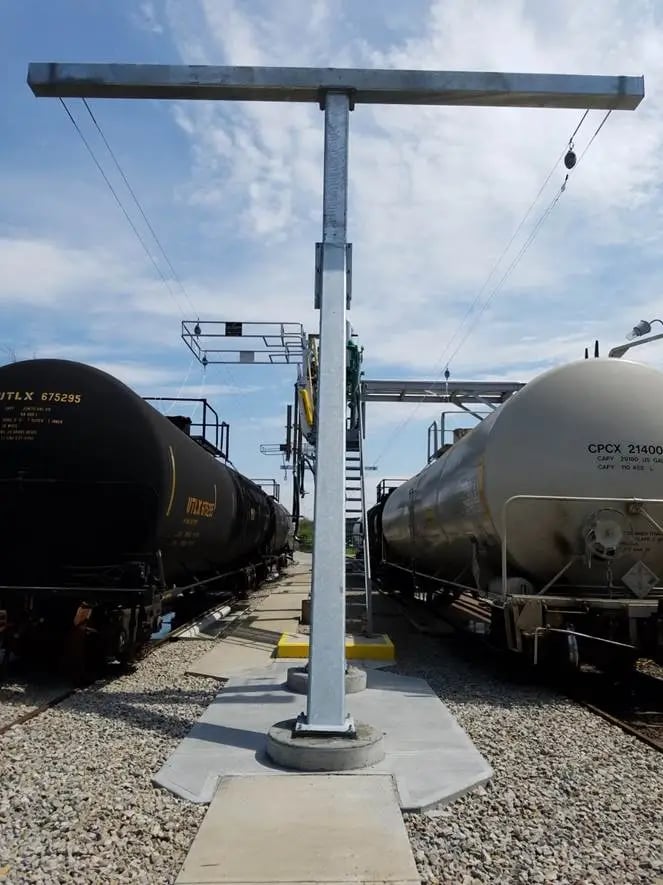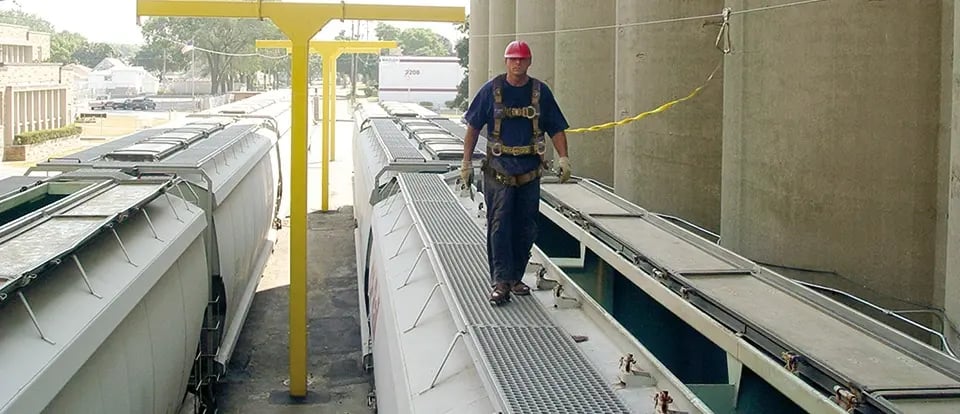L & T Style Support Column Lifelines
“L” and “T” Column Style Lifelines are particularly well suited for fall arrest in applications where height restrictions preclude the use of HLL installations at foot level. By placing the fall protection system overhead, a fall can be arrested before a worker strikes equipment or the ground below. “L” and “T” Column Style HLL’s are often found in rail car, mass transit, and truck applications, just to name a few.
If you are new to this form of horizontal lifeline, you may assume that the structural steel columns, horizontal beams, and the stainless steel cable and shuttle are the most important parts of these systems. Although each of these components plays an important role in keeping workers safe, the portion that is only slightly visible–the concrete foundation–is key to ensuring safe and reliable system operation. This is why working with a fall protection with in-house engineering capabilities (including PE)–is critical. Our turnkey approach to fall protection means that we assume sole responsibility (and liability) for each phase of your project: design, fabrication, installation, training, inspection, and re-certification.

Design Considerations
"L" and "T" Column Style Lifeline Design Considerations "L" and "T" Column Style Horizontal Lifeline Systems are common for outdoor applications where rigid beam systems are not practical. One of the advantages to a gallow style HLL is design flexibility. A series of gallows posts can be configured to run in a straight line, or accommodate curves and bends, which is a common practice for railroad yard applications. Rail yards with multiple sections of track or busy freight terminals with multiple loading areas are ideal applications for T-Style gallows, which effectively double the coverage area of the fall protection system. In applications where a gallows style horizontal lifeline system is under consideration, the depth of the water table, as well as the condition and compaction of the soil must be assessed to ensure an adequate foundation to support the weight of the system. The distance spanned by a gallows style horizontal lifeline is limited only by the ability to erect anchor points of anchor points; HLL systems can safely span distances in excess of 600 feet. Special care must also be taken to account for load and deflection rates which are determined by a number of factors, including pre-tension of the cable, length of the area spanned, and the number of workers connected to the system.
See Our L & T Column Lifelines




Related Markets
DFP is a complete turnkey provider of OSHA compliant fall protection systems with years of experience engineering and installing horizontal lifelines. The end result is a proper fall safety solution that will provide years of safe and reliable service.

b-1.jpg?width=1368&height=1340&name=Rail%20(175)b-1.jpg)


